Primary metabolism as a major component of fruit growth and quality (Invited Review)
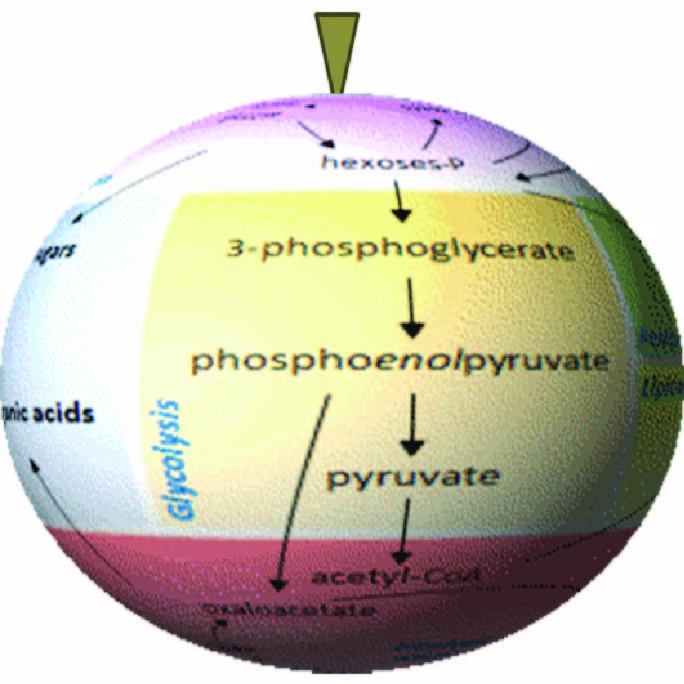
Annals of Botany 122: 1–21, 2018
doi: 10.1093/aob/mcy057
Primary metabolism is not only essential for growth, but is also a major component of fruit quality. Beauvoit et al. review primary metabolism as an obvious target for significant improvement of fruit traits. Agricultural practice and breeding have successfully improved fruit metabolic traits, but it can prove difficult to unravel the complexity of the interplay between development, metabolism and environment. Nearly two decades of post genomics approaches involving transcriptomics, proteomics and/or metabolomics have generated much information concerning the behaviour of fruit metabolic networks. Today, with the emergence of new modelling tools, comes the opportunity to turn this information into a mechanistic understanding of fruits, and ultimately to design better quality fruits.
Authors: Bertrand Beauvoit, Isma Belouah, Nadia Bertin, Coffi Belmys Cakpo, Sophie Colombié, Zhanwu Dai, Hélène Gautier, Michel Génard, Annick Moing, Léa Roch, Gilles Vercambre, and Yves Gibon
Effects of sucrose depletion on pollen tube growth
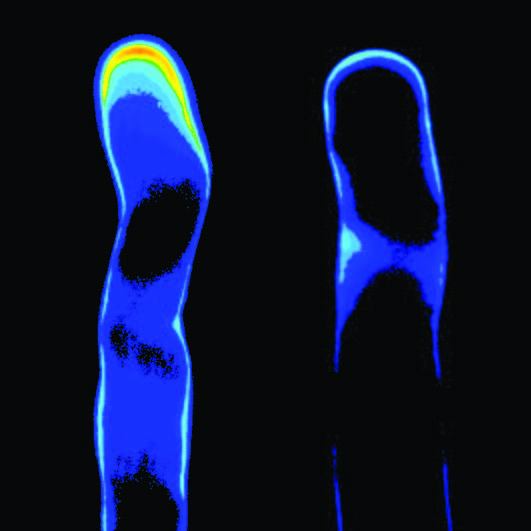
Annals of Botany 122: 23–43, 2018
doi: 10.1093/aob/mcy043
The pollen tube (the male gametophyte of flowering plants) is a fast-growing cell that requires high energy rates, the lack of which can impact plant reproduction. Parrotta et al. analyse the effects of energy deficiency on the development of Nicotiana tabacum (Solanaceae) pollen tubes by replacing sucrose with glycerol in the culture medium. Energy deficiency causes specific changes in pollen germination and tube length, sugar metabolism, ATP content and pH and ROS (reactive oxygen species) levels, as well as cell wall deposition and composition. Because pollen tubes continue to grow, they adapt to metabolic stress.
Authors: Luigi Parrotta, Claudia Faleri, Stephano Del Duca, and Gampiero Cai
Hornwort stomata are not actively regulated
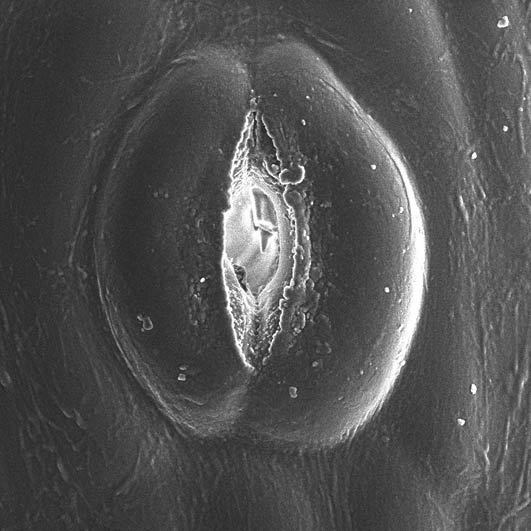
Annals of Botany 122: 45–57, 2018
doi: 10.1093/aob/mcy045
Stomata, pores in the plant epidermis that regulate gas exchange, are a key innovation that enabled freshwater algae to colonize Earth’s landmasses some 500 Mya. Pressel et al. investigate stomatal behaviour in hornworts, a phylogenetically pivotal group at the base of the land plant tree. They show that there are no potassium fluxes associated with hornwort stomata, and that these do not respond to external factors (abscisic acid, desiccation, darkness and plasmolysis), which cause stomatal closure in other land plants. Their results run counter to the notion that active stomatal control was acquired early in the evolution of land plants, and support the alternative hypothesis of gradual acquisition of active control mechanisms.
Authors: Silvia Pressel, Karen S. Renzaglia, Richard S. (Dicky) Clymo, and Jeffrey G. Duckett
Links between leaf venation and xylem anatomy to leaf hydraulic vulnerability
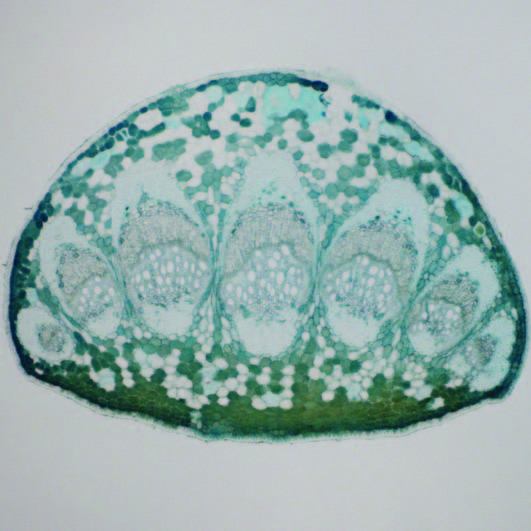
Annals of Botany 122: 59–67, 2018
doi: 10.1093/aob/mcy051
Leaf hydraulic vulnerability, or the ability of leaves to maintain functional water transport during drought, is a major determinant of plant survival and species distribution limits. This ability is linked to the different structural properties of leaf venation and xylem anatomy. Blackman et al. show that among 26 ecological diverse Australian woody angiosperm species, leaf hydraulic vulnerability is most strongly correlated with the ratio between the wall thickness and lumen breadth of vessels within the leaf venation and is independent of leaf size.
Authors: Chris J. Blackman, Sean M. Gleason, Alicia M. Cook, Yvonne Chang, Claire A. Laws, and Mark Westoby
Epizoochory and diversification of the Achyranthoids (Amaranthaceae)
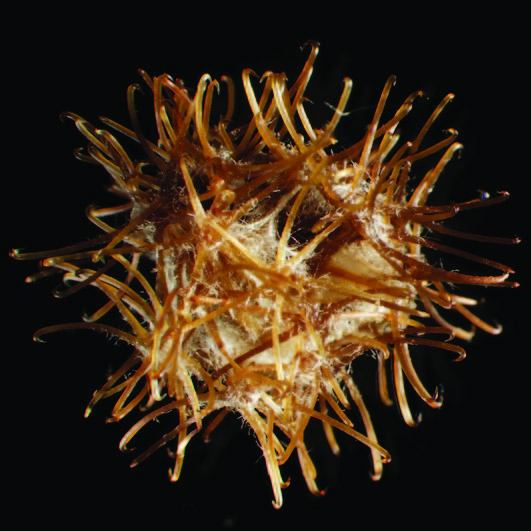
Annals of Botany 122: 69–85, 2018
doi: 10.1093/aob/mcy055
Many African Amaranthaceae exhibit inflorescences that comprise sterile flowers modified to hooks. Di Vincenzo et al. evaluate if these flowers enhanced the diversification of a clade of African Amaranthaceae, where dispersal by animals is commonly observed: the Achyranthoids. Di Vincenzo et al. infer phylogenetic relationships, estimate species divergence times, evaluate trait-dependent changes of diversification rates and reconstruct ancestral character states. Their results indicate that Achyranthoids started to diversify c. 28 Mya without significant rate shifts, and that modified sterile flowers evolved repeatedly without boosting diversification. Extensive gene flow through regularly migrating mammals may have counteracted speciation by isolation.
Authors: Vanessa Di Vincenzo, Michael Gruenstaeudl, Lars Nauheimer, Melaku Wondafrash, Paris Kamau, Sebsebe Demissew, and Thomas Borsch
Stem gravitropism and tension wood formation in Acacia mangium
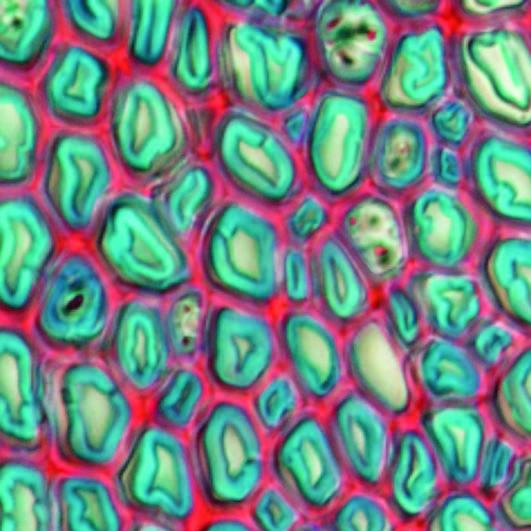
Annals of Botany 122: 87–94, 2018
doi: 10.1093/aob/mcy056
Nugroho et al. investigate negative gravitropism, tension wood formation and growth eccentricity in Acacia mangium (Fabaceae). A. mangium seedlings were artificially inclined at 30o, 45o, 60o, and 90o from the vertical and at 0o as controls. Their results suggest that the angle of inclination of the stem influences negative gravitropism, the width of the tension wood region and the thickness of gelatinous layers. Larger amounts of gelatinous fibers and thicker gelatinous layers might generate the higher tensile stress required for the higher speed of stem-recovery movement in A. mangium seedlings.
Authors: Widyanto Dwi Nugroho, Satoshi Nakaba, Yusuke Yamagishi, Shahanara Begum, Md Hasnat Rahman, Kayo Kudo, Sri Nugroho Marsoem, and Ryo Funada
Ethylene modulates root cortical senescence in barley
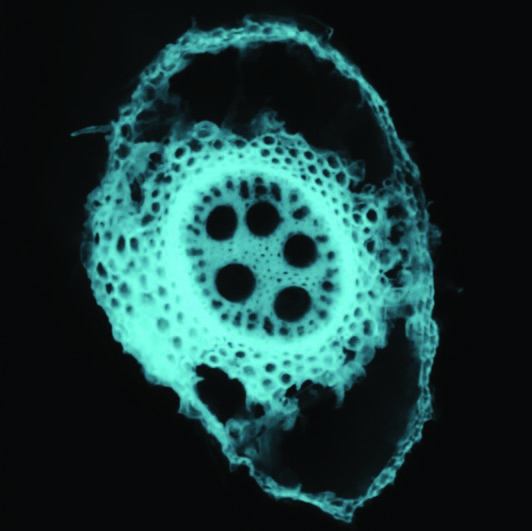
Annals of Botany 122: 95–105, 2018
doi: 10.1093/aob/mcy059
Root cortical senescence (RCS) is a poorly understood phenomenon with implications for adaptation to edaphic stress. Schneider et al. demonstrate that ethylene modulates RCS. Genes related to ethylene synthesis and signalling are upregulated during RCS in optimal, low nitrogen, and low phosphorus nutrient regimes. RCS is accelerated by root-zone ethylene treatment, and this effect is reversed by an ethylene action inhibitor. RCS is correlated with expression of two genes related to programmed cell death. The development of RCS is similar to root cortical aerenchyma formation with respect to ethylene modulation of the programmed cell death process.
Authors: Hannah M. Schneider, Tobias Wojciechowski, Johannes A. Postma, Kathleen M. Brown, and Jonathan P. Lynch
Seeking stable traits to characterize the root system architecture
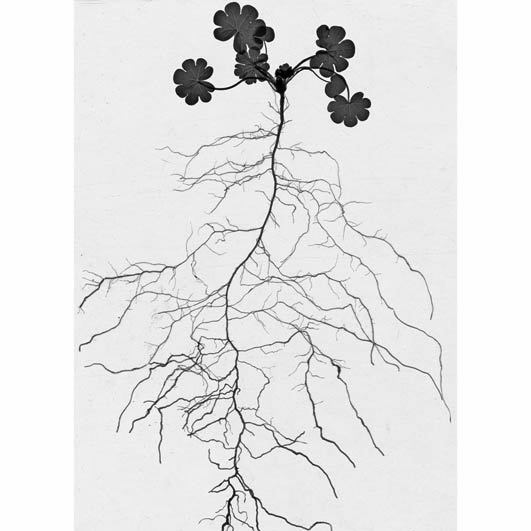
Annals of Botany 122: 107–115, 2018
doi: 10.1093/aob/mcy061
Since root system architecture exhibits environmental plasticity, Pagès and Kervella aim at identifying stable root traits. They test five traits related to elongation and branching in sixty species at two contrasted sites, and show their large and stable variations among species. Thus, these traits could be used to study the genetic determinism and the impact on ecosystems of root system architecture.
Authors: Loïc Pagès and Jocelyne Kervella
Variations in leaf growth parameters within the tree structure of adult Coffea arabica
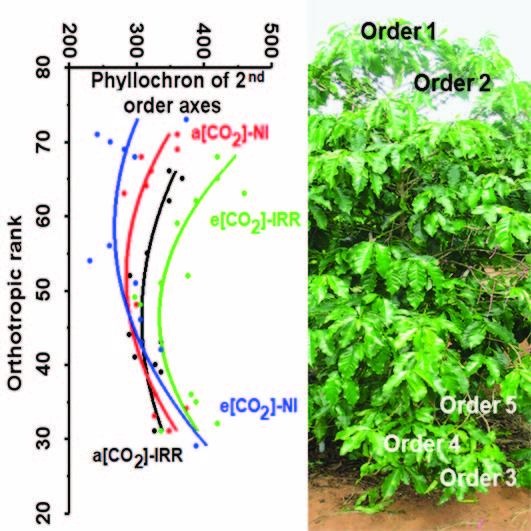
Annals of Botany 122: 117–131, 2018
doi: 10.1093/aob/mcy042
Dynamics in branch and leaf growth parameters determine tree architecture. Rakocevic and Matsunaga find that phyllochron and leaf expansion in Coffea arabica (Rubiaceae) increased with axis order, from 2nd to 4th. Leaf growth parameters are modified by environment – it takes more thermal time for leaf expansion under irrigation than rainfed conditions; the phyllochron and life span are higher during reduced seasonal growth than during active growth; the compensation of high air carbon dioxide concentration to low water availability was observed on leaf expansion and retention. The dynamics and distribution of plant leaf area are results of synchronization in phyllochron, leaf expansion, life span, axes emergency and senescence within the branching structure.
Authors: Miroslava Rakocevic and Fabio Takeshi Matsunaga
Somatic ploidy mapping of the complex labellum of sexually deceptive bee orchids
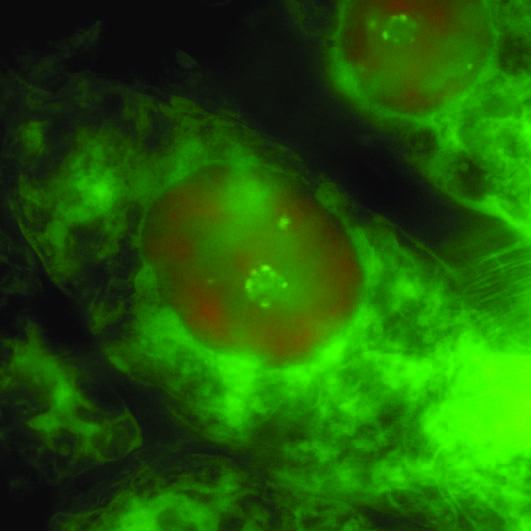
Annals of Botany 122: 133–150, 2018
doi: 10.1093/aob/mcy048
Recent tissue-level observations made indirectly via flow cytometry show that endoreplication (partial or complete duplication of the nuclear genome in the absence of subsequent cell division) may represent a significant component of a plant’s developmental programme. Bateman et al. combine automated measurement of nuclear size in homogenized tissues via flow cytometry with direct observations of nuclear size and structure from specific parts of the epidermis of the labellar petals of two Eurasian orchid genera. Endoreplication involved repeated near-doubling of the genome and proved especially frequent in the more complex labellum of Ophrys, reaching 16C polytene nuclei in large trichomes.
Authors: Richard M. Bateman, Jessica J. Guy, Paula J. Rudall, Ilia J. Leitch, Jaume Pellicer and Andrew R. Leitch
Regulation of anisotropic cell elongation in Arabidopsis
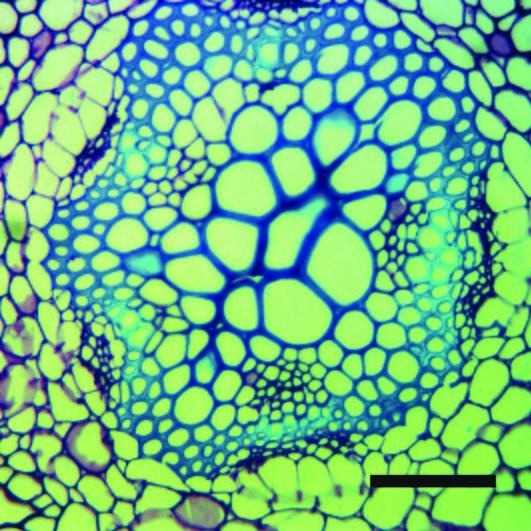
Annals of Botany 122: 151–164, 2018
doi: 10.1093/aob/mcy049
Proper anisotropic cell elongation is essential for optimal growth and development of plants. Anisotropic cell elongation depends on directional cell wall relaxation by cellulose microfibril arrangement. Le et al. find that gain-of-function mutation of AtDICE1, a gene encoding a putative ER-localized membrane protein, causes defects in anisotropic cell elongation by disturbing cell wall integrity in Arabidopsis. Further genetic, biochemical and transcriptomic observations suggest that AtDICE1 contributes to the proper anisotropic cell elongation process in the vascular tissue possibly through the process of cell wall formation.
Authors: Phi-Yen Le, Hyung-Woo Jeon, Min-Ha Kim, Young-Im Choi, Eung-Jun Park, Hyoshin Lee, and Jae-Heung Ko
Diversification of the resurrection monocot family Velloziaceae
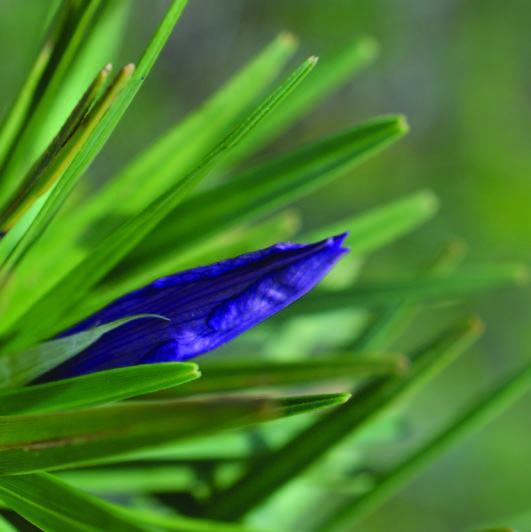
Annals of Botany 122: 165–180, 2018
doi: 10.1093/aob/mcy063
Velloziaceae is the most emblematic plant of the species-rich campos rupestres flora in Eastern Brazil, with a few species in other South American habitats and Africa. The family is known for displaying desiccation tolerance, or ‘resurrection’ behaviour, in addition to other ecological specialisations to life on arid outcrops. Using a time-calibrated molecular phylogeny, Alcantara et al. estimate rates of diversification and test for the influence of geographic distribution and functional traits reflecting water-use strategies. Diversification accelerated in two species-rich lineages predominant in the campos rupestres, Barbacenia and Vellozia, in association with the evolution of putatively adaptive traits in response to independent climatic events.
Authors: Suzana Alcantara, Richard H. Ree and Renato Mello-Silva
Evidence that divergent selection shapes a developmental cline in a forest tree species complex
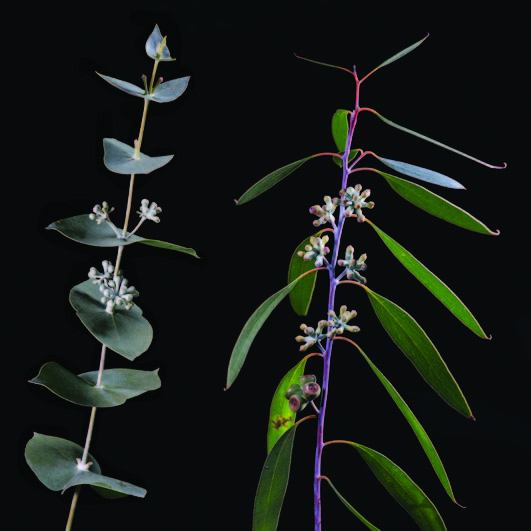
Annals of Botany 122: 181–194, 2018
doi: 10.1093/aob/mcy064
Changing the timing of developmental events has been an important mechanism for adaptive evolution. Costa e Silva et al. investigate the selective forces shaping a developmental cline from the heteroblastic Eucalyptus tenuiramis (Myrtaceae) to the homoblastic E. risdonii. Based on data from a common-garden field trial established with 38 native provenances, the authors show that increased vegetative juvenility is associated with increasing home-site aridity, and that directional selection at the mesic trial site favours reduced vegetative juvenility. They suggest that developmental plasticity and heterochrony are under-appreciated processes, contributing to populations of long-lived organisms, such as trees, persisting and ultimately adapting to environmental change.
Authors: João Costa e Silva, Peter A. Harrison, Robert Wiltshire and Brad M. Potts
Timxing of the effect of polyploidy on clonality in an autopolyploid plant
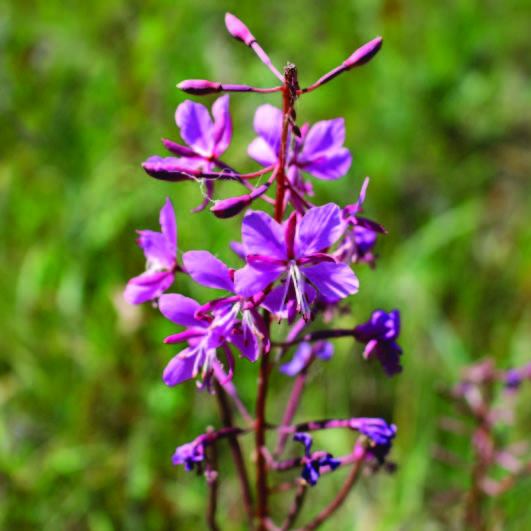
Annals of Botany 122: 195–205, 2018
doi: 10.1093/aob/mcy071
Despite their hypothesized association, the effects of polyploidy on clonal reproduction are understudied. Van Drunen and Husband test whether clonality increases with ploidy by contrasting root bud production in Chamerion angustifolium (Onagraceae) between diploids, naturally occurring tetraploids and synthetic neotetraploids. Root bud production increased in neotetraploids vs. diploids, potentially promoting within-cytotype mating and establishment. Natural tetraploids had similar investment to diploids, suggesting selection for decreased clonal reproduction in tetraploids over time. This study contains the first empirical measure of clonal reproduction in synthetic polyploids, offering a unique perspective on the impact of clonality during the early stages of polyploid evolution.
Authors: Wendy E. Van Drunen and Brian C. Husband


